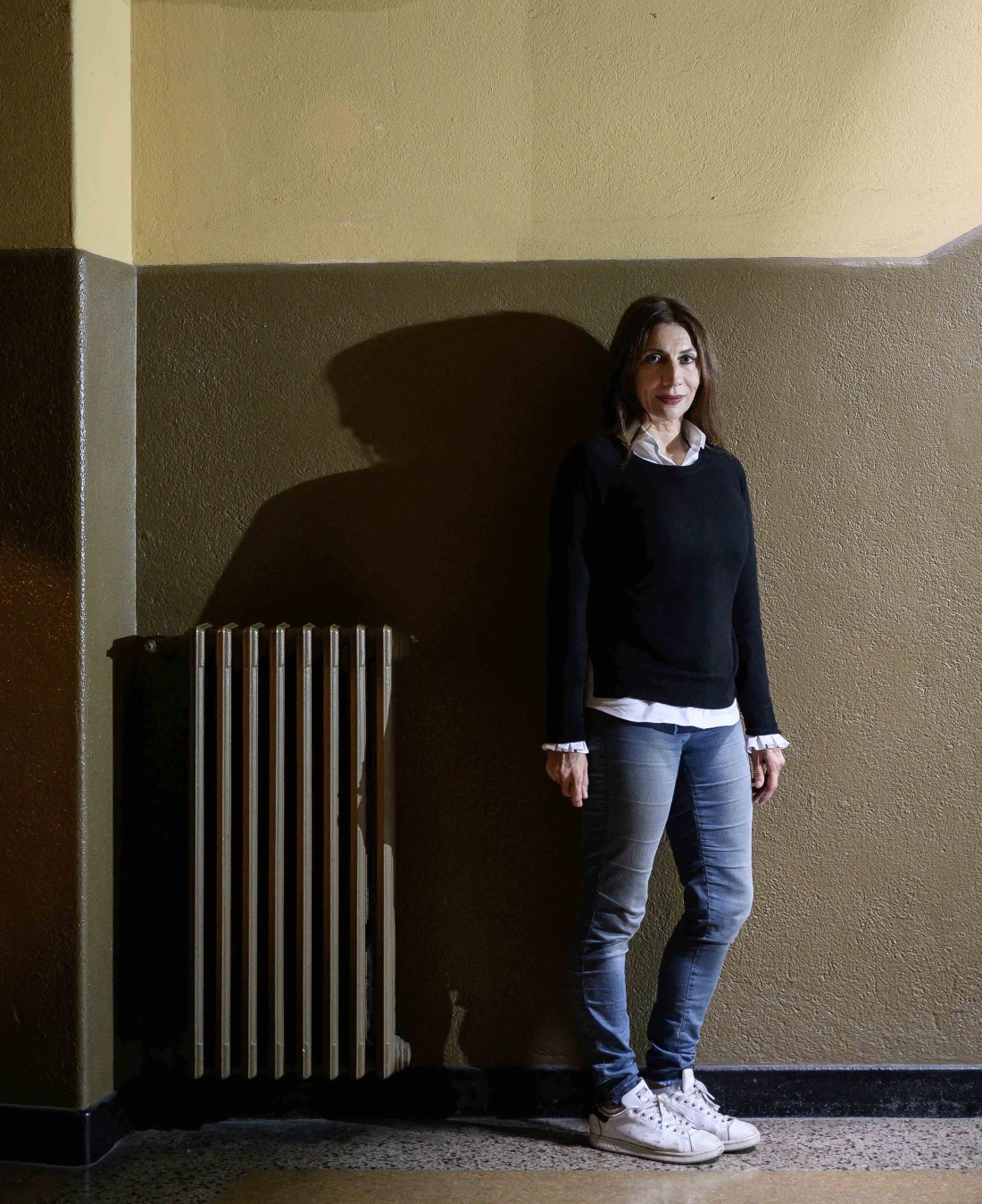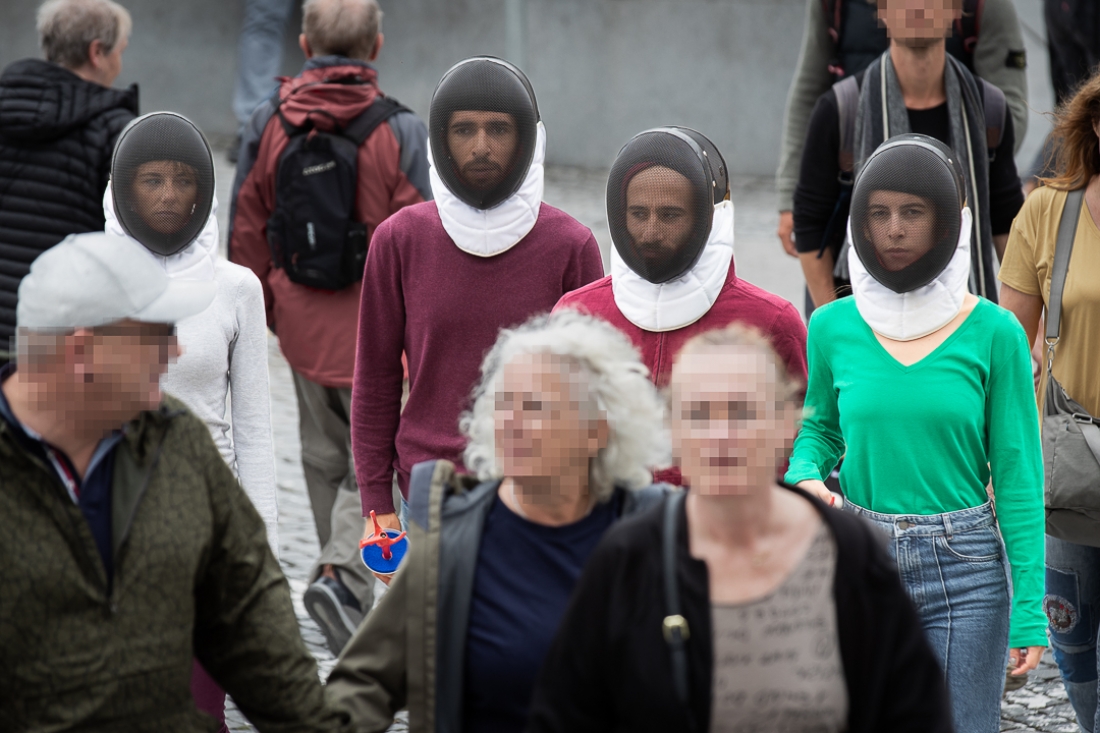Interview
Né Barros
February
2023
Wed
8
After IO (2021) and Neve [Snow] (2022), Né Barros presents, on February 17th and 18th, the third play in the series Paisagens, Máquinas e Animais [Landscapes, Machines and Animals] at Teatro Rivoli. We talked with the choreographer about Distante [Distant], a piece that focuses on the idea of a machine-body.
In Distante [Distant], which dialogues are established with the other pieces of the series Paisagens, Máquinas e Animais [Landscapes, Machines and Animals]? And within the piece, with which it dialogues, with which we will dialogue?
When I thought about starting this series Paisagens, Máquinas e Animais, the idea was, on the one hand, to bring together a set of challenges and issues that have accompanied me through several works. Basically, these themes have always been mirrored, problematized and explored artistically in them. Here, in this piece, I decided to narrow the focus on these themes a little more and created a first piece called IO, a second called Neve [Snow] and now, the third, that will be Distante. Although each of the pieces is autonomous from each other - that is, it does not need the others to be understood or contextualized - in the background, they all reflect what is a body-landscape, a body-animal or a body-machine. However, each of the pieces, has a focus, an emphasis on each of these dimensions. Thus, in IO, we focus more on the idea of the animal-body, more instinctive, more erratic, from the point of view of a certain evolved degree of gesture. In the second piece, I worked more on the idea of a body that mobilizes itself in the landscape and that is also landscape. In Distante, we will focus more on the idea of a body-machine through a relationship, established by me, of something that evolves: the machine and the technological as something that allows us evolve in a way. In this case, I start from fencing as an ancient form of fighting and combat, but that, in the meantime, has evolved into a body to body way of playing, towards a more ethical perspective. This evolution of technique and of a body-machine happens because it can take advantage of its gesture and effort depending on anything that it wants to achieve. And this side, to me, is important, because it functions as a kind of anti-war submessage. Can we evolve? That's a question. I think so!
Can the machine be liberating? What can a body-machine do?
There is something we need to know: technique and technology will not save us from the great evils and pains of the world. We're going to carry them forever and we have to get used to dealing with this evil and this pain, with the problems of the world. This does not mean withdrawing. We have to fight them, minimize them and be proactive, feeling that in the small gesture, in the micro, we can make the change. In this case, the technique and the machine, in my perspective, can do just that: the small movements and small transformations that can have a greater impact and that are fundamental in this evolutionary leap of a body that uses its knowledge – theoretical or practical – to make some change or transformation. Art is always here to help us in this, to put into question a number of values and issues that are established. Once again, the technique serves us to challenge what is established. And the machine, to introduce, again, the random and the contingency, with which we also have to learn to live.
How distant or which kind of (possible) distance exists between poetics and ethics?
That's an excellent question. In dance, specifically, it always arises ethical questions because it is immediate. It is valid for any art form, but in dance it is very clear, because we work with the other body, which is not abstract. It is a body with an identity, a race, with its issues and singularities, and the choreographer will have to work, deal and dialogue artistically with them. So immediately arises questions as "How am I going to play with each other?" or "How do I relate to the other's face?". What's the other one telling me? I can't ignore it! So from here, there is soon a principle that has to be equated, when our matter is the body of the other. In my case, I have developed a working methodology that precisely tries to reconcile what is my impulse and my will to create and to transform the movement into a gesture and to work it with the other body. I call it "familiarity of movement", which involves producing a series of material that I explore in improvisations and, from that moment on, there is a more direct and immediate transmission process, in which the dancer captures - what was left in his/her memory, what was retained - and, from here, we create a choreographic subject with familiarities between the different bodies and gestures. Every dancer is a body, every dancer is a gesture. Therefore, there are similarities and systematic differences. Using this methodology, I can reconcile the difference with the drive of what I want to expose, without imposing, without formatting and without shaping.
In Distante [Distant], which dialogues are established with the other pieces of the series Paisagens, Máquinas e Animais [Landscapes, Machines and Animals]? And within the piece, with which it dialogues, with which we will dialogue?
When I thought about starting this series Paisagens, Máquinas e Animais, the idea was, on the one hand, to bring together a set of challenges and issues that have accompanied me through several works. Basically, these themes have always been mirrored, problematized and explored artistically in them. Here, in this piece, I decided to narrow the focus on these themes a little more and created a first piece called IO, a second called Neve [Snow] and now, the third, that will be Distante. Although each of the pieces is autonomous from each other - that is, it does not need the others to be understood or contextualized - in the background, they all reflect what is a body-landscape, a body-animal or a body-machine. However, each of the pieces, has a focus, an emphasis on each of these dimensions. Thus, in IO, we focus more on the idea of the animal-body, more instinctive, more erratic, from the point of view of a certain evolved degree of gesture. In the second piece, I worked more on the idea of a body that mobilizes itself in the landscape and that is also landscape. In Distante, we will focus more on the idea of a body-machine through a relationship, established by me, of something that evolves: the machine and the technological as something that allows us evolve in a way. In this case, I start from fencing as an ancient form of fighting and combat, but that, in the meantime, has evolved into a body to body way of playing, towards a more ethical perspective. This evolution of technique and of a body-machine happens because it can take advantage of its gesture and effort depending on anything that it wants to achieve. And this side, to me, is important, because it functions as a kind of anti-war submessage. Can we evolve? That's a question. I think so!
Can the machine be liberating? What can a body-machine do?
There is something we need to know: technique and technology will not save us from the great evils and pains of the world. We're going to carry them forever and we have to get used to dealing with this evil and this pain, with the problems of the world. This does not mean withdrawing. We have to fight them, minimize them and be proactive, feeling that in the small gesture, in the micro, we can make the change. In this case, the technique and the machine, in my perspective, can do just that: the small movements and small transformations that can have a greater impact and that are fundamental in this evolutionary leap of a body that uses its knowledge – theoretical or practical – to make some change or transformation. Art is always here to help us in this, to put into question a number of values and issues that are established. Once again, the technique serves us to challenge what is established. And the machine, to introduce, again, the random and the contingency, with which we also have to learn to live.
How distant or which kind of (possible) distance exists between poetics and ethics?
That's an excellent question. In dance, specifically, it always arises ethical questions because it is immediate. It is valid for any art form, but in dance it is very clear, because we work with the other body, which is not abstract. It is a body with an identity, a race, with its issues and singularities, and the choreographer will have to work, deal and dialogue artistically with them. So immediately arises questions as "How am I going to play with each other?" or "How do I relate to the other's face?". What's the other one telling me? I can't ignore it! So from here, there is soon a principle that has to be equated, when our matter is the body of the other. In my case, I have developed a working methodology that precisely tries to reconcile what is my impulse and my will to create and to transform the movement into a gesture and to work it with the other body. I call it "familiarity of movement", which involves producing a series of material that I explore in improvisations and, from that moment on, there is a more direct and immediate transmission process, in which the dancer captures - what was left in his/her memory, what was retained - and, from here, we create a choreographic subject with familiarities between the different bodies and gestures. Every dancer is a body, every dancer is a gesture. Therefore, there are similarities and systematic differences. Using this methodology, I can reconcile the difference with the drive of what I want to expose, without imposing, without formatting and without shaping.




